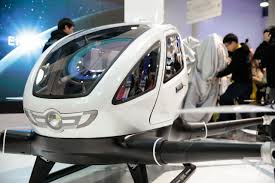
Breaking News
 $26M Frozen on Blockchain - With One Click
$26M Frozen on Blockchain - With One Click
 Italy are on national strike shutdown rejecting digital enslavement...
Italy are on national strike shutdown rejecting digital enslavement...
 The following U.S. states are currently using the rebranded "Reporty Homeland Security" so
The following U.S. states are currently using the rebranded "Reporty Homeland Security" so
 NATO Chief Urges Europe To Prepare For Long-Term World War With Russia, China, Iran & North Korea
NATO Chief Urges Europe To Prepare For Long-Term World War With Russia, China, Iran & North Korea
Top Tech News
 HUGE 32kWh LiFePO4 DIY Battery w/ 628Ah Cells! 90 Minute Build
HUGE 32kWh LiFePO4 DIY Battery w/ 628Ah Cells! 90 Minute Build
 What Has Bitcoin Become 17 Years After Satoshi Nakamoto Published The Whitepaper?
What Has Bitcoin Become 17 Years After Satoshi Nakamoto Published The Whitepaper?
 Japan just injected artificial blood into a human. No blood type needed. No refrigeration.
Japan just injected artificial blood into a human. No blood type needed. No refrigeration.
 The 6 Best LLM Tools To Run Models Locally
The 6 Best LLM Tools To Run Models Locally
 Testing My First Sodium-Ion Solar Battery
Testing My First Sodium-Ion Solar Battery
 A man once paralyzed from the waist down now stands on his own, not with machines or wires,...
A man once paralyzed from the waist down now stands on his own, not with machines or wires,...
 Review: Thumb-sized thermal camera turns your phone into a smart tool
Review: Thumb-sized thermal camera turns your phone into a smart tool
 Army To Bring Nuclear Microreactors To Its Bases By 2028
Army To Bring Nuclear Microreactors To Its Bases By 2028
 Nissan Says It's On Track For Solid-State Batteries That Double EV Range By 2028
Nissan Says It's On Track For Solid-State Batteries That Double EV Range By 2028
Ehang's Passenger Drone Will Begin Real-World Testing

In the bleak desert east of the ocean and west of the mountains, a robot will open up, take a human into its body cavern, and then lift off into the sky. No more than 23 minutes later, the robot will land, and disgorge its human contents. The Ehang 184 is confusingly termed a "passenger drone," and the remotely piloted people-carrying device is now cleared to test in Nevada.
The drone will test under the supervision of the Nevada Institute for Autonomous Systems, and the Ehang 184 joins the growing tech boom in Nevada. The empty desert holds the hope of hyperloops, drone delivery, autonomous trucking, and drone airports. (Nevada is also famously the home of secret military aircraft testing, and there's a distant possibility that the Ehang could be adopted into military use.)
While the market for, say, self-driving trucks or drone deliveries is pretty self-explanatory, who wants a helicopter that can't fly for even a full half hour? The Guardian writes:

 Carbon based computers that run on iron
Carbon based computers that run on iron

